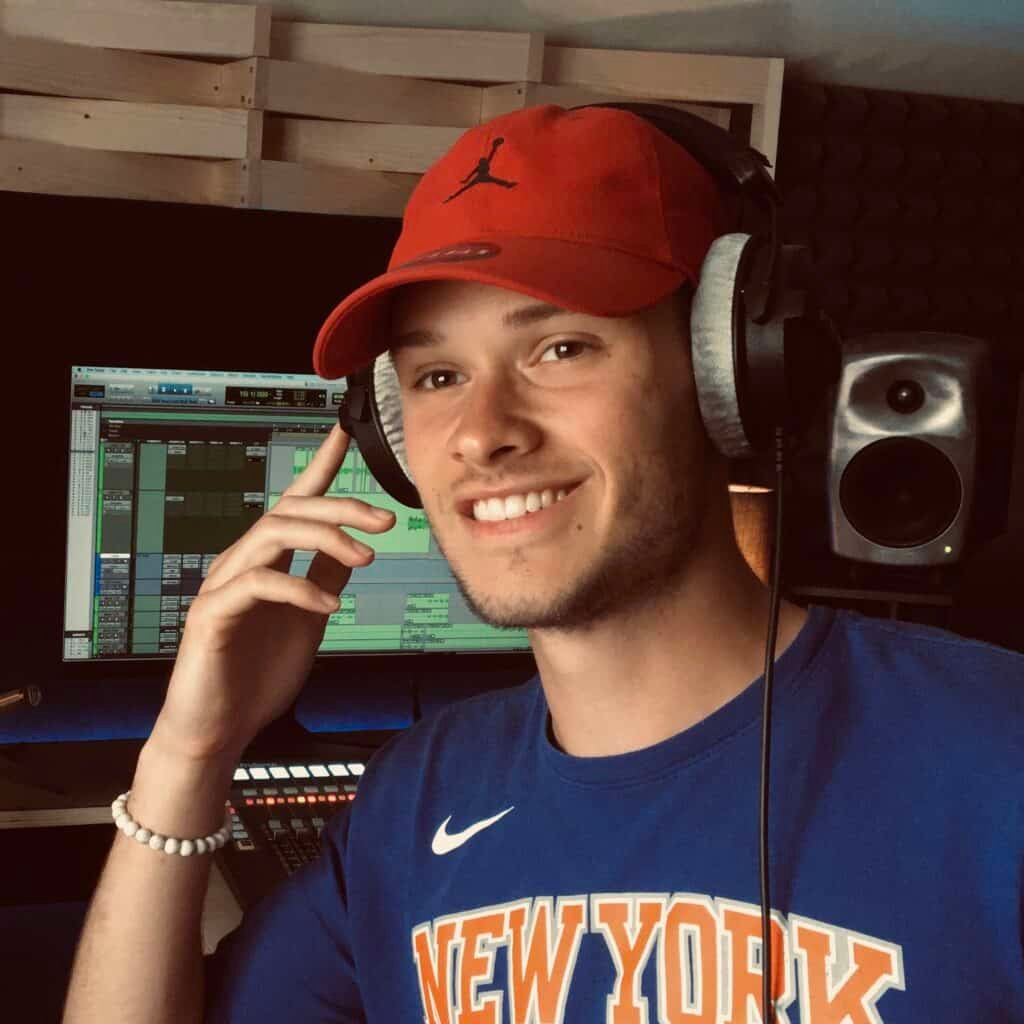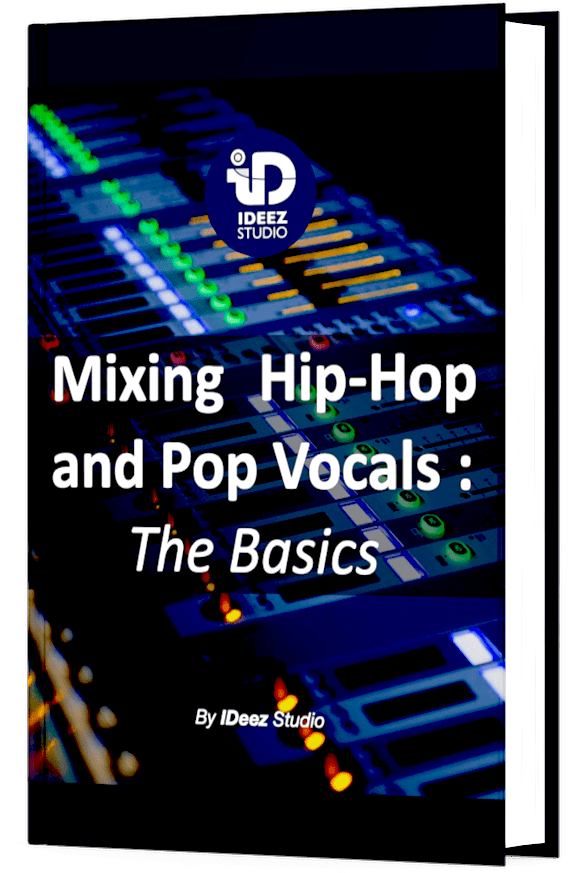Recording greats vocals is one of the most exciting parts of making music. However, doing so requires a balance between emotion meets technique, and when you nail it, you capture a performance that can give listeners goosebumps.

But there’s a common myth that’s been floating around for years that you need to invest in top-tier gear and an expensive, professionally treated room to get the kind of vocal sound you hear on the radio.
The good news is that’s not the case.
Sure, having high-end equipment can be helpful, but it’s not the be-all and end-all. Some of the most iconic albums were recorded in less-than-perfect home studios. Think of Bruce Springsteen’s “Nebraska,” Billie Eilish’s “When We All Fall Asleep, Where Do We Go?”, or even Bon Iver’s “For Emma, Forever Ago,” all created in the comfort of a home setup.
We know they did it, so the question becomes, how do you get those studio-quality vocals without breaking the bank? In this guide, we’ll go through 10 expert tips to help you capture pro-level vocals right from your home studio.

1. Dial In Your Recording Space
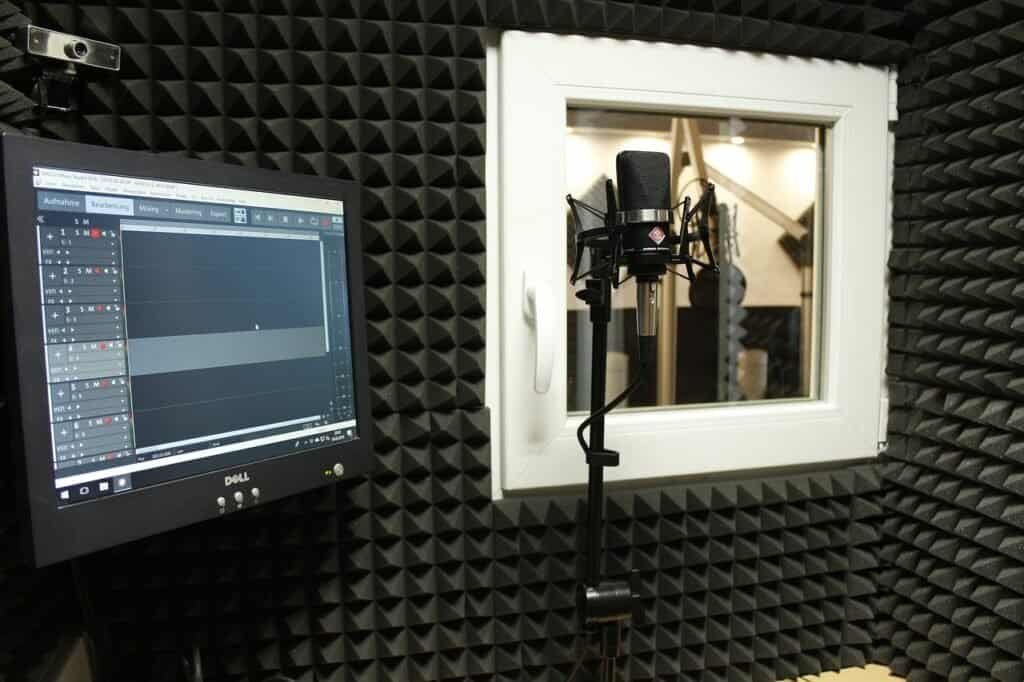
Getting your room sounding right is one of the most important parts of recording great vocals.
If you’re working from a home studio, you might not have the luxury of choosing the perfect acoustically-treated space. Your room’s shape and size are likely fixed, and let’s face it, you probably don’t have endless options to move things around.
But don’t worry! There are still plenty of things you can do to make the most of what you have.

First, aim for a room with the least amount of natural echo or reverb. You can test this out by clapping your hands and listening for any ringing or fluttering echoes. The more you hear, the more work the room will need. Smaller rooms with carpeted floors and lots of soft furnishings tend to be your best bet since they naturally absorb some sound.
Once you find a decent spot, you can take steps to treat it further. Some heavy blankets or thick curtains can do the job. You can also position pillows or duvets around the recording area to create a makeshift vocal booth. The goal is to absorb as many sound waves as you can from bouncing off hard surfaces.
Consider external noise as well. A room that sounds great isn’t much use if it’s next to a busy street or under a noisy neighbor! Pay attention to what’s happening outside your chosen space at different times of the day, and try to pick a location with the least interruptions.
2. Find the Right Microphone
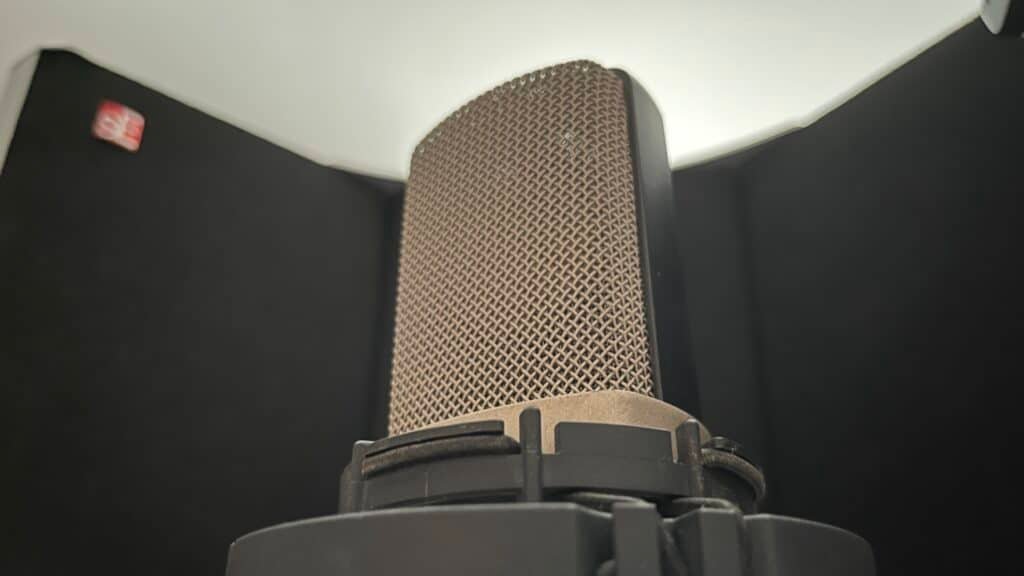
Once you’ve got your room sounding good, the next step is finding the right microphone for your vocals. This is where some experimenting can really pay off. Every voice is unique, and different microphones can capture distinct characteristics, so it’s important to try a few if you can.
Most people lean toward large-diaphragm condenser microphones (like the Rode NT1-A, if you’re looking for something affordable) for recording vocals, as they’re extremely sensitive and can capture a lot of detail. But that doesn’t mean they’re the only game in town.
Looking for a professional sound engineer specializing in pop and hip-hop music ? You’re in the right place! Mixing, mastering, production, editing,… we’ve got it all covered!
Let’s start now!
Take the Shure SM7B, for example. It’s a dynamic mic, and while it might not have the same clarity as some high-end condensers, it’s been the choice for many iconic vocal recordings (Michael Jackson’s Thriller was famously recorded on it). Its ability to handle loud sound sources and reject background noise makes it a great option, especially in a home studio setting.
The point here is don’t be afraid to go against the grain and find a microphone that complements your voice and suits your recording space.
3. Experiment with Microphone Placement
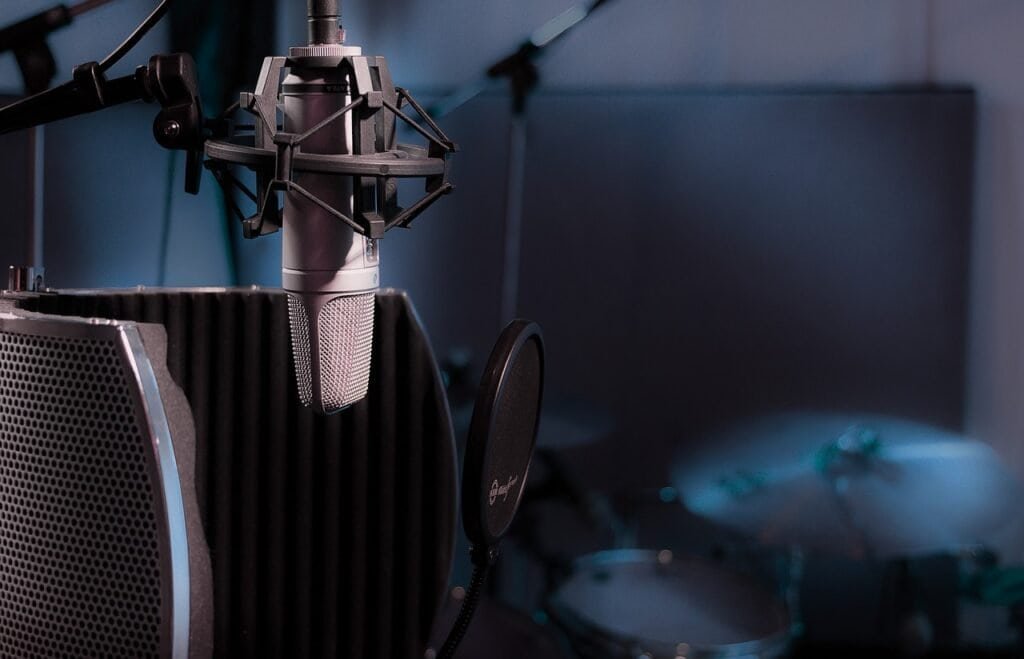
Mic placement plays a huge role in how your vocal recordings will sound. Even the best mic in the world can produce lackluster results if it’s not positioned correctly.
The angle and proximity of the microphone to your mouth can greatly influence the tone, clarity, and presence of your recording. It’s worth taking the time to experiment with different placements to find what works best for your voice and style.
Start by playing around with both the distance and angle of the mic. Move closer for a warmer, more intimate sound, or back off a bit to reduce bass buildup and capture a more natural tone.

PRO TIP: Tilting the mic slightly off-axis can help reduce sibilance and plosives (those harsh “S” and “P” sounds).
Here are a few quick placement tips to try:
- Straight-on, 6-12 inches away: Clear and direct, great for most vocal styles.
- Slightly above, angled down: Adds brightness and reduces bass, good for singers with deeper voices.
- Close proximity (2-4 inches): Adds warmth and intimacy but can increase the risk of plosives and bass buildup.
Note that the placement tips above will only really work with microphones that have a directional polar pattern, such as a mic.
4. Set Up a Pop Filter
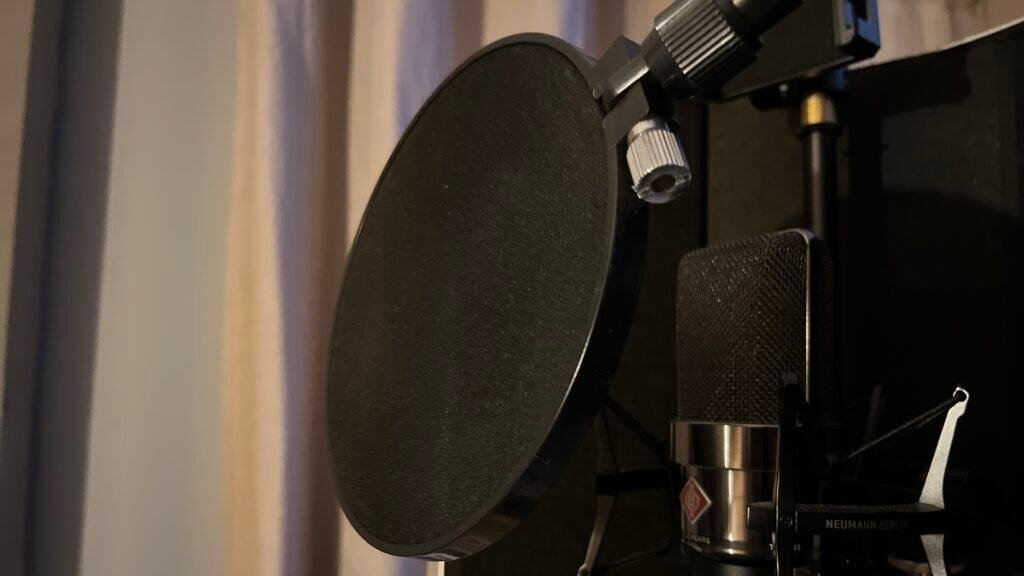
Next, make sure you’re using a pop filter. Pop filters are simple tools that you place between the singer and the microphone to reduce plosives.
The good news is, pop filters are pretty inexpensive. You don’t need to splurge on a high-end metal one. Even a simple mesh pop filter will work just fine. When setting up your pop filter, position it about 2-4 inches away from the microphone and around 2 inches from the singer’s mouth to diffuse bursts of air from plosives.

5. Check Your Levels
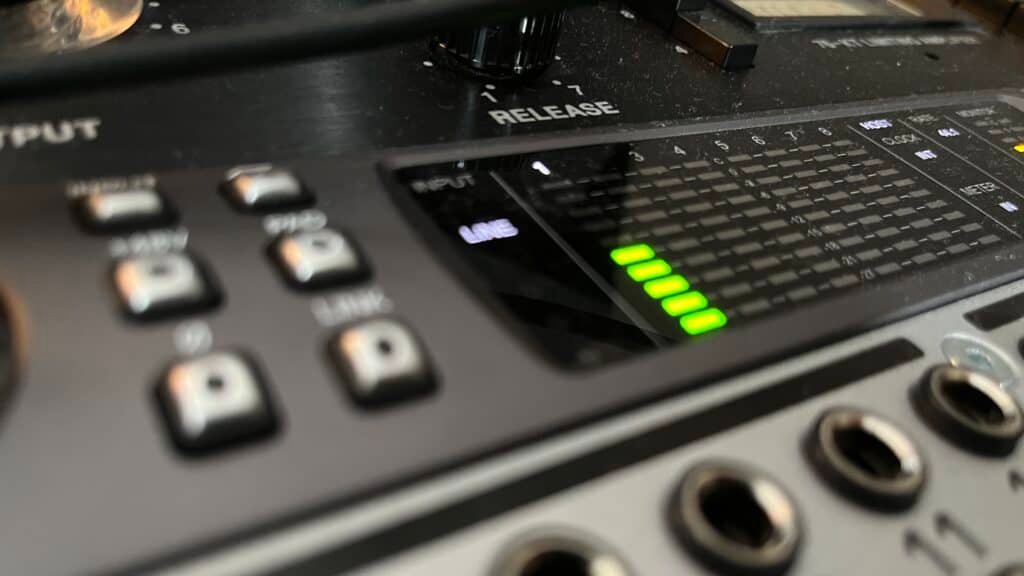
Now that your space is set up and your mic is in place, it’s time to start recording.
But before you hit that big red button, it’s important to check your levels. By “levels,” I mean the volume at which your audio is being captured.
Setting levels correctly is crucial because if they’re too low, your recording will be quiet and full of noise. Too high, and you’ll end up with distortion and clipping, which can ruin an otherwise great performance.

To set your levels properly, follow these steps:
- Perform your loudest part of the song to get an accurate idea of peak levels.
- Adjust the gain on your audio interface or preamp until the input level meters in your DAW are peaking around -6 to -12 dB.
- Aim for a consistent level without letting it hit the red zone or go above 0 dB.
- Leave some headroom to avoid clipping and allow for any unexpected volume peaks.
Once your levels are set, you can record with more confidence knowing that you’re not going into the red!
6. Get a Good Headphone Mix
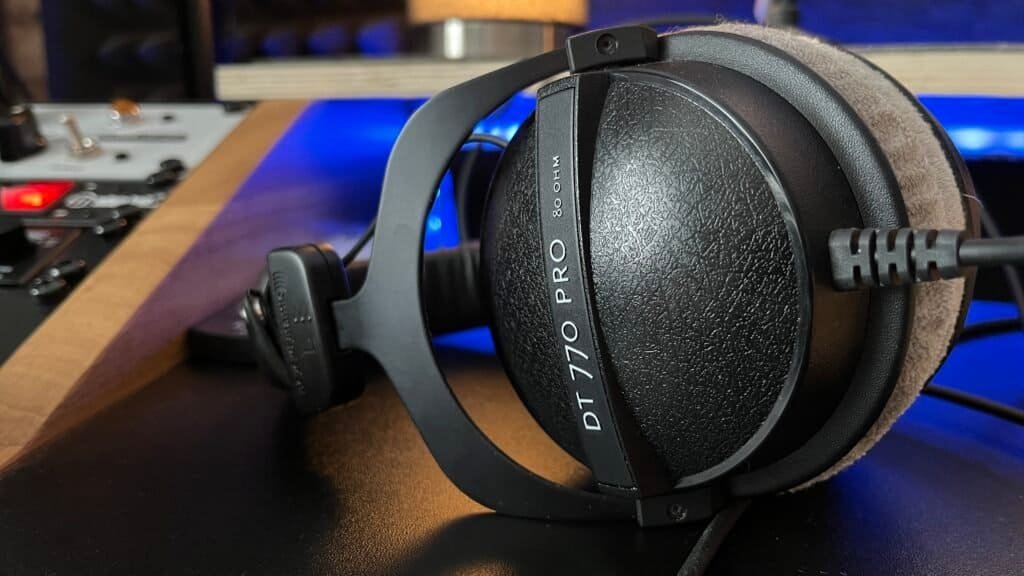
Getting a good headphone mix is one of the best ways to make for a comfortable recording experience.
When you can clearly hear yourself and the backing music, you’re more likely to sing confidently and accurately. Start by balancing your vocal level against the backing track. If the music is too loud, resist the urge to crank up your vocal in the headphones.
Instead, lower the backing track volume. This way, you maintain the healthy gain structure you dialed in during the last step.

You might also consider adding a bit of reverb or other effects to your headphone mix.
Monitoring with some reverb can make your voice sound fuller and more natural, which can help you perform better. I also often like to use effects that I plan on applying in the final mix, like delay or subtle compression, as it helps me hear how my voice will sit in the track.
Just be sure these effects are only in the monitoring chain and aren’t being recorded directly, as it’ll keep your raw recording clean for later mixing decisions.
And by the way, if you’re looking for studio headphones, I recommend you check the Beyerdynamic DT-770 headphones. These are one of the most versatile headphones of the market and the value of money is unbeatable!
7. Record Your Track In Sections

Before I get into this, I want to acknowledge that some singers out there prefer to knock out their vocals in one full take. If that’s your jam, more power to you! I’ve worked with several vocalists who can deliver a killer, consistent performance from start to finish. They’ve got that kind of focus and stamina, and if you’ve got that, then rock on.
But for the rest of us, recording in sections is the way to go. Breaking up your track into smaller chunks can do wonders for your focus. Instead of trying to nail every note perfectly in one go, you can zero in on smaller parts of the song, giving each one the attention it deserves.

I like to look for the natural breaks in your song (verses, choruses, bridges, etc.) These are the spots where you can comfortably hit pause and take a breather. Start by recording just the verse, then move on to the chorus, and so on.
This approach not only helps you from feeling fatigued but also allows you to concentrate on getting each section just right.
8. Track With Compression

The human voice can be a pretty dynamic instrument. From quiet, intimate vocalists like Al Green to powerful ballad belters like Adele, there’s a pretty wide range and a lot to reign in during the mixing phase. This is especially true when vocalists move between these two extremes in a single song or even phrase.
That’s where compression comes in. We use it to tame peaks and smooth out vocals so that every phrase, word, and syllable comes through nice and even.
When recording with compression, a little goes a long way. If you’re tracking vocals, try using just a touch (2-3dB at most) to keep those louder bits in check without squashing the life out of your performance. The goal here is to gently reign in the extremes, not to flatten the life out of everything.
Looking for a professional sound engineer specializing in pop and hip-hop music ? You’re in the right place! Mixing, mastering, production, editing,… we’ve got it all covered!
Let’s start now!
Over-compressing while you record can leave you with a sound that’s stiff and lifeless, and once it’s done, there’s no going back. So save the heavy-handed stuff for post-production, where you can finesse it to your heart’s content.
I also find that a little bit of compression during recording can boost my confidence as a performer. When my voice sounds steady and controlled in my headphones, I’m more likely to give a stronger, more assured take.
If you’re not ready to fully commit to compression while tracking, you can always dial it into your headphone mix without printing it to the recording. This way, you get the benefits of a smoother, more controlled sound in your ears while keeping your options open for later.
9. Record Doubles for Comping and Layering
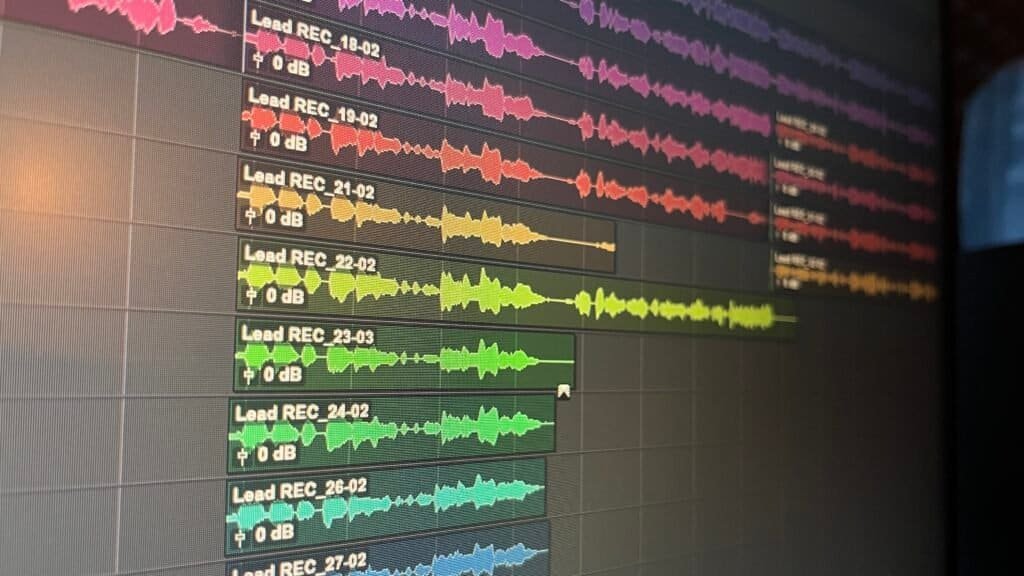
Recording vocal doubles not only provides you more options for comping down the line, which is the process of picking the best bits from multiple takes to create the perfect performance. But it can also give your vocal parts more depth in the final mix.
When I track doubles, I like to aim to record at least two or three extra takes of each vocal line. During the mix phase, you can use these extra takes can be used to build up a thicker, layered sound.

10. Try Using a Different Mic for Backing Vocals

And finally, my last tip!
Switching up the mic for your backing vocals and harmonies can do wonders for your mix. It’s one of my favorite recording tips I’ve picked up over the years.
A different mic can give you slight tonal variations, helping create a natural separation between your lead and backing vocals. This subtle difference can make your overall sound feel more spacious and layered.
If you don’t have another mic on hand, you can still experiment with different polar patterns, mic placements, or even tweak your recording chain. One other trick I’ve learned is to add more compression to your backing vocals, as it can help sit them further back in the mix.
Final Thoughts
I hope these tips have been helpful as you work on getting studio-quality vocals in your home studio!
You don’t need to shell out thousands on fancy gear to get a great recording. With a bit of planning, some patience, and a few of the techniques we discussed, you can get a pro sound without ever leaving your house.
If you have any questions about vocal recording or about anything in the field of music production, please contact us! We’ll be happy to help.
Related Articles:
My favorite tools for mixing pop and hip-hop music:
Plugins
In the field of auto-tune, I’m convinced that nothing’s better and more efficient than Antares Auto-Tune Pro. As for the EQ’s, FabFilter Pro-Q3 and Slate Digital Infinity EQ are, in my opinion, the best tools. For compression, I have 2 favorites plugins: Waves RComp and UAD EL8 Distressor.
As for reverb, I’m a big fan of the Soundtoys Little Plate, but generally, I go for the Valhalla VintageVerb for its versatility. I also love the Arturia Rev PLATE-140 and the UAD Pure Plate for its organic side.
Headphones
The closed headphones I love and will always love using for mixing pop and hip-hop music are the Beyerdynamic DT-770. As for the best open-back headphones, I use the Sennheiser HD600 headphones, and I’m really happy of them!
Monitors
Having a pair of Yamaha HS7 in its studio or home studio is always cool for more excitement while listening to your mixes. The Adam Audio T7V monitors are also super accurate. In my studio, I also have a pair of Genelec 8030 for their reliability.
Hardware gear
For anyone who wants to start using hardware in their mixes, I always recommend these 2 units from Klark Teknik: the EQP-KT and the 76-KT. Don’t forget to use good converters, such as the Apollo interfaces. This is essential for a good rendering.

